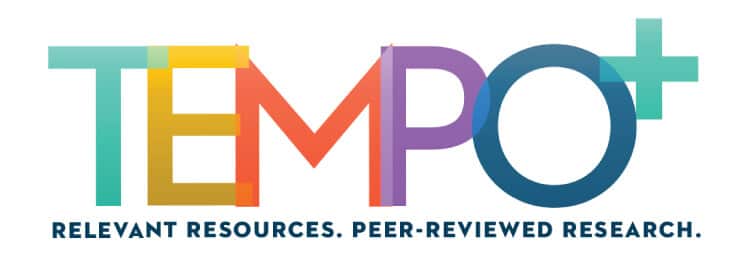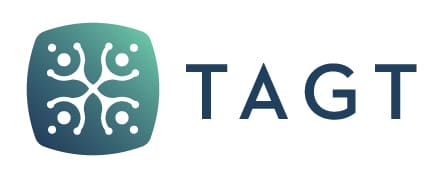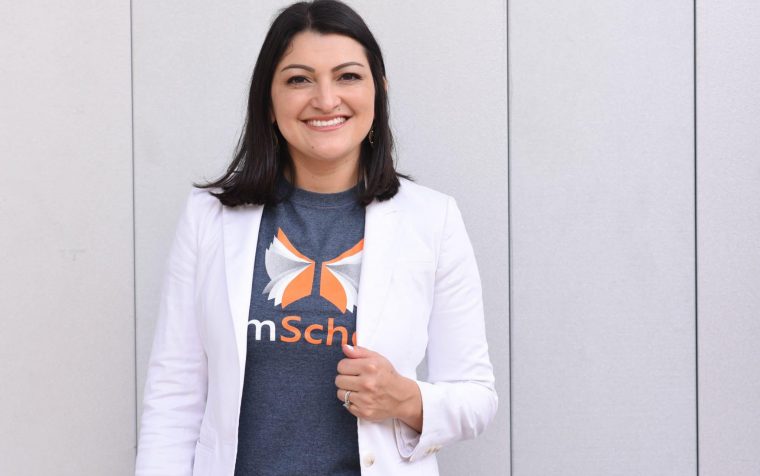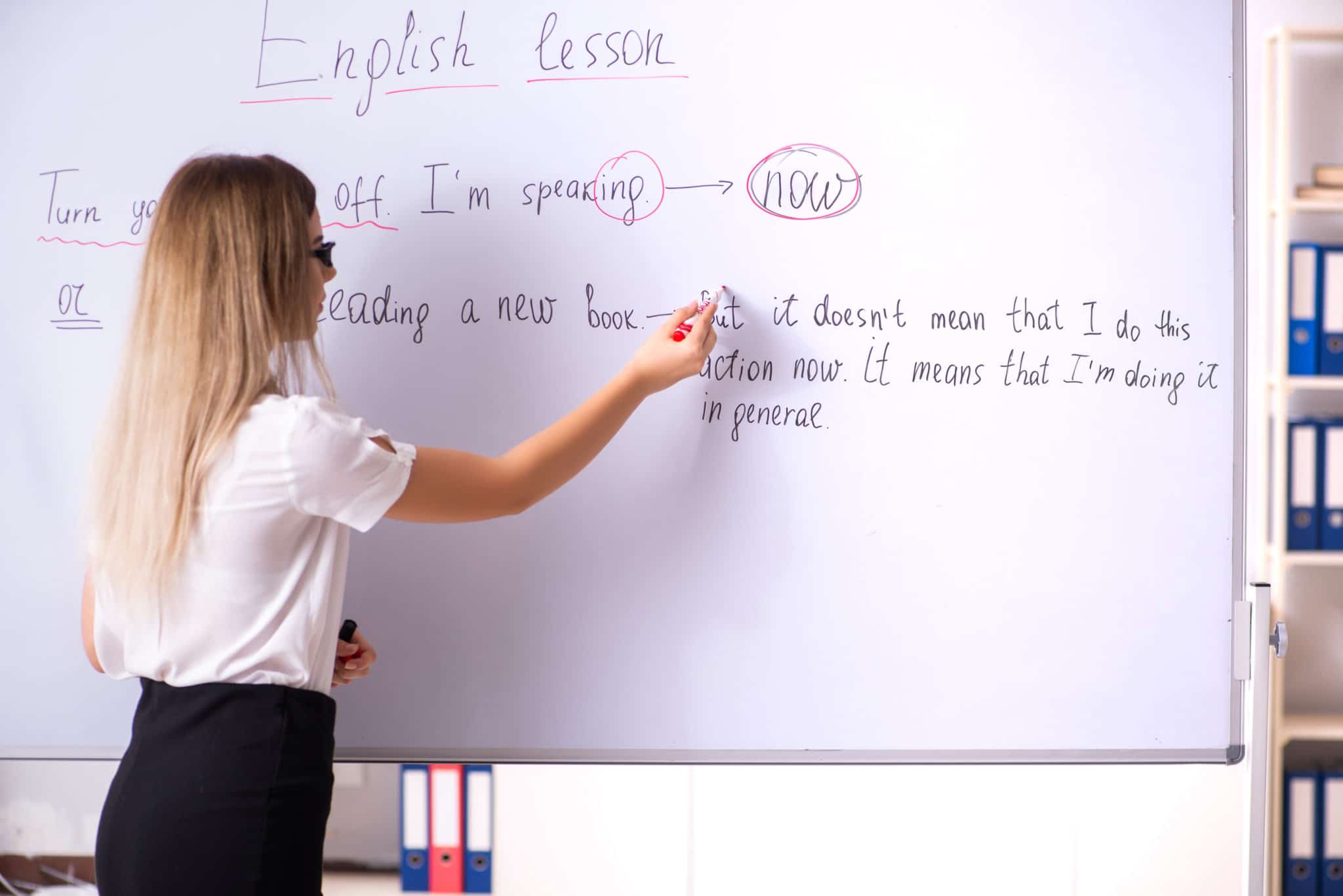Seeing Beyond the Labels: An Interview With Viridiana Carrizales PDF
In June 2020 at the TAGT Leadership & Gifted+Equity Conference, Viridiana Carrizales presented a session about supporting undocumented and immigrant gifted and talented students. As an educator in Texas, this is an area of great interest to me. In the last few years, I have seen students, staff, and families impacted by the immigration process.
I had the opportunity to sit down (via Zoom) with Carrizales, cofounder of ImmSchools, an organization that partners with K–12 schools and educators to support undocumented and immigrant students and families, to learn more about how we can support gifted and talented students who are immigrants or undocumented.
Editor’s Note. This interview has been edited for length and clarity.
Q: As a young immigrant to the United States, what structures or strategies most supported you?
A: I came to the United States with my family when I was 11. And, for us, the education system was very foreign and very new—especially as immigrants and especially, for me, as a student who did not speak any English. Starting middle school in Dallas, TX, in a gifted and talented middle school was a good introduction to the education system in this country. At Alex W. Spence Middle School in Dallas, I found a community right away that welcomed me. I’m very grateful for the teachers that were there because they saw beyond me being an immigrant. They saw beyond me being an English language learner. From the very beginning, they made me feel like I mattered. They made me feel that I was more than all of these identity markers—that I had the potential. I remember feeling affirmed in my identity very early on.
Mrs. Johnson is one of the teachers that really played this critical role in my life. I remember that very first year when I came to the U.S. She told me she believed in me and that she knew I was going to do very well in school—and this is with me really not being able to speak any English, right? She saw my potential. She reminded me and told me that I was going to do something, and I think that was so important, especially as a young student, especially as a student who was just coming to terms with living in a very new environment. Hearing that affirmation from teachers was extremely crucial, and I do think teachers play a big role because I did believe what Mrs. Johnson told me when she said she believed in me.
Q: What are some challenges or concerns faced by gifted students who are undocumented (and their families) of which educators might not be aware?
A: I know that this was true for me as a new immigrant in this country, and I can say I’m very confident that it probably continues to be very true for many students and families who are undocumented. I remember one of the first conversations I had with my parents when I came to the U.S. was: “You’re undocumented, but no one has to know about this.” I remember feeling afraid about my parents being detained and deported. There was a lot of fear that I had, and I never really conveyed that to my teachers. I never really shared why I was so nervous. I remember, in middle school, the front office staff asking anyone who came in for a driver’s license: “Do you have a driver’s license?” or “Can I see your driver’s license?” And, knowing that my parents were undocumented and knowing that they did not have any type of ID, I told them not to come to my school. I told them not to come to any meetings. At that moment, I started seeing school as an unsafe place, especially for my family. I don’t think that my teachers or the front office staff even realized that, from those small things or actions that sometimes we take, how big the impact can be on immigrant students. I think those are some of the challenges that many immigrant students bring—a lot of trauma, a lot of fear.
They also bring a lot of resiliency and a lot of strengths, and I don’t think we remind them enough that they matter. I don’t think we remind them enough of all of these beautiful things that it means to be an immigrant.
Q: You mentioned that schools ask for IDs and you asked your family not to attend school functions. What can teachers and schools and school districts do to better remove these types of barriers?
A: This is actually why I cofounded this organization—ImmSchools. While I felt like I had very supportive educators like Ms. Johnson, there were a lot of shortcomings, a lot that educators could have done to make me feel like I truly belonged in school and made me feel like people like me can be successful. We started this organization to ensure that we are providing support, especially for teachers or really anyone within the K–12 system, so that no other student, no other family feels like my family feels or experiences that unwelcoming environment like my family did. We are doing a lot of training right now and leadership development for educators, and the one of the first things that we share is: You just need to be aware. Many of the students that you are serving are impacted by this. In fact, here in Texas, 13% of students in K–12 are either undocumented or have at least one parent who is undocumented. That’s more than 1 out of 10 kids in our schools. Many of you have a student that never shares that they are immigrant or have immigrant parents. It is very likely that these students are in our classrooms. Because of that we need to be aware of the different experiences of immigrant children. There is this fear that many of them experience and have because they’re hearing their parents have conversations about losing their jobs or driving without a driver’s license or potentially being detained. Or, they’re having conversations as a family on what to do if one of them gets deported. So, that’s a reality that students are bringing with them.
The second piece is that there’s a lot of policies that directly impact the access that students have, whether it is higher ed or whether it is specific programs. We, as educators, may not be sharing those opportunities or making sure our students are accessing all of the opportunities they have. For example, here in Texas, undocumented students that have lived in Texas 3 years prior to graduating high school can go to college. That’s something that I did not find out through my school. I found out through another student, from what I feel like, by luck. Right now, we work with a lot of undocumented students in schools who are hearing from their teachers and who are hearing from their high school counselors that college is not an option. As educators, our students are trusting us. We need to be very mindful and aware of the policies that exist and impact our students.
And, then third, I would say this is extremely important, and as educators we’re doing it already, but when it comes to our immigrant community, we have to build those trusting relationships with them. Undocumented families don’t really trust a lot of institutions. They don’t trust a lot of places that might be asking for their information. Schools are one of the only places that families might feel safe or might trust because they know that immigration cannot come into our schools. Oftentimes when they build relationships with a teacher, that teacher is the person that they are going to come to ask for everything, whether it is related to education or not.
Q: When students are identified for G/T services and are receiving G/T instruction from one teacher or even more than one teacher, you mentioned social-emotional learning (SEL), affirmations, and just really setting up the bonds of trust in the classroom. Are there other things that a G/T teacher can do to support this student, whether academically, emotionally, or behaviorally?
A: I think one recommendation is to see beyond, really push ourselves as educators to see beyond what’s in front of us or sometimes what is on the surface. Again, I know that many of our students are experiencing very difficult things, and oftentimes, they have normalized these things. They’ve normalized that they have to work, that they have to be in school. They normalize that they have to take care of their younger siblings. They normalize that they have all these additional responsibilities, which is not normal. And, in fact, a lot of these things are strengths—the fact that they are juggling all of these responsibilities. That’s something that we should give language to help students understand that (1) it’s not normal, but (2) these things that they are doing are things that are actually going to help them.
I say this because I’m working with a lot of students who have graduated from high school and are applying for college. When you ask them their strengths or to share their story or something unique about them, a lot of them don’t know. A lot of them think that because “I haven’t been involved” or “I don’t have a lot of leadership experience because I’m helping my parents” or “I work on the weekend” or “I take care of my siblings” that these are bad things. I think we have a responsibility as G/T educators to help our students see their strengths. Help them see beyond what’s on the surface. Connect the right skills that a lot of us look for in the workplace. You know how to juggle different responsibilities. You know how to manage your time effectively. Do you speak different languages? Are you able to navigate and transition or adapt to different circumstances?
All of these things are assets, and we can help our students start seeing themselves in that way instead of feeling ashamed, instead of feeling like they’re not good enough.
Q: When we think about gifted and talented students, we know that there are some additional social-emotional learning (SEL) practices that we want to consider. When you couple giftedness with additional factors, such as a student that is an immigrant or has a family of undocumented status, what are some things that educators can do to support these students?
A: The most important thing, especially with SEL, is recognizing the whole child and the fact that there’s all those different things that impact our students’ ability to learn. I honestly do think that being able to provide the SEL and support for students is key, especially for immigrant students or undocumented students, who in many ways have to overcome additional challenges. These are undocumented students who worry about their immigration status and many other things. Many of our immigrant families are low income. Many do not have the security in their jobs, or many of them don’t have health insurance, which is especially crucial right now with COVID-19. That has become a very critical need for our families. So, I think it’s important for us to recognize there’s all those different factors that impact our students’ ability to feel safe and, therefore, their ability to learn in school. So, recognizing the challenges that many students experience given their immigration status—and even having conversations about this—is extremely important.
One of the things we do in our training is provide very tangible things our educators can do/use. One of those is a poster that says “This is a safe place for every student” or “This is an inclusive place for immigrant students.” We need that visibility. We need to make sure that our students understand that they belong. I remember thinking back about my own experience and if I had seen a poster in the classroom. If I had a conversation about immigration, I don’t know if I would have felt as afraid as I did. I don’t know if I would have experienced all the different challenges that I did. I would have probably felt more comfortable coming to a teacher and saying, “Hey, I saw that you had this poster and actually my family is immigrant, and I’ve really been struggling with this,” or “Actually, the reason why I didn’t come to school last week is because I had to go see my dad who is in the detention center.” We need to create a space where our students are having these conversations, where we are going beyond the academics to create an environment where students feel like they can bring their full selves into the classroom.
Q: When you look at district policies and district practices, what would you consider to be crucial elements of an immigrant-friendly or undocumented-friendly school district?
A: Right now, and really since 1982, the Supreme Court in Plyler v. Doe ruled that every child in this country, no matter their immigration status or their parent’s immigration status, has the right to a K–12 education. When you go into schools and you ask teachers or you share this with teachers, this is new information to them. They don’t really know that this is the law. We have to provide the best education regardless of immigration status. Since 2016, less than 1% of school districts, including here in Texas, have policies in place that say they are going to protect the rights of every student, no matter their immigration status. They’ve got to make sure that their schools are safe and welcoming for their students. I know that fewer than 10 school districts in Texas out of about 1,200 have a safe zone resolution that states their schools are a safe and welcome place for immigrant students. And that has to change. I think that the policy in itself is extremely important because we have to communicate and we have to be very explicit with families that schools are, in fact, welcoming places for them. And having a policy that says that is critical.
I think what’s even more important is having that policy paired with very concrete implementation practices. One thing is to tell families, “Yes, our school is safe and welcoming.” Another thing is to say, “Here are some things that we are doing to make sure that you see and feel that our school is safe and welcoming.” So, one of the things we’re doing with schools is training their teachers and staff to make sure they know how to engage and support immigrant students and families. That’s one key implementation practice that schools can do to create that welcoming environment: Train everyone that is in the school system so that when you have an undocumented student coming to someone for help, that teacher, that high school counselor, that principal knows exactly how to support that student and the resources that exist for them and their family. So, I feel the safe and (real) resolution is key, especially when it comes with very concrete and very specific implementation practices.
Another policy that we are working toward and supporting a lot of schools and districts to have in their schools is protocol on what to do if an immigrations agent comes into the school. Because, unfortunately, we’ve seen instances where this has been true. We’ve had an immigration official come into the school looking for a specific student or parent. And, as educators, we need to understand the rights that our students have. We have FERPA (the Family Educational Rights and Privacy Act), which says, by law, that we cannot disclose information about a student without a judicial warrant. But, as a front office school staffer, I know that we’re not trained on the difference between a judicial warrant and an immigration warrant. We need to have very specific protocols if an agent, really any kind of agent, comes into a school by making sure that we are respecting the rights of our students. And this is also very important for immigrant families because, again, we want to make sure that they know the school is a safe place.
Q: During COVID-19, are there things that districts can do to continue to support students during school closures and even through virtual learning?
A: We’ve been working with a lot of school districts who we were working with prior to the pandemic, but right now, we have become crucial partners in connecting districts with families they haven’t heard from. Many of these families have connections with organizations, or maybe they are connected more with a church. If schools haven’t developed trusting relationships with the students and families prior to the pandemic, I hope this is a learning moment for us about how crucial and how important that step is. But now that we’re here in the midst of this pandemic, I think that this is an opportunity for school districts to really partner and collaborate with organizations, community organizations, that have those relationships with parents and with students. So, that could involve making sure that churches are passing out information about schools that are in that area or connecting with organizations like ImmSchools. We’ve been working with many undocumented students and families throughout Texas and in New York, and we have helped close that gap. There are families who are really connected to us who are trusting us who haven’t yet connected with the schools. I think this is an opportunity to do that. Again, I’m hopeful that this is a lesson for us about how crucial developing those relationships with families is. Because it will matter, and we depend on those relationships when crises like this happen.
Q: If an educator wanted to get connected to organizations that could help to support our families, what would you recommend, specifically in Texas?
A: We have ImmSchools located in San Antonio and in Dallas, but we’ve also done work in Houston and Austin. I’m hopeful that educators see ImmSchools as a resource, specifically when it comes to supporting immigrant and undocumented students. Another resource that I’m hopeful will be helpful to educators addresses one of the biggest things: The biggest question that a lot of families have is where legal service is. As educators, we can’t really provide that legal support. Oftentimes, the best thing we can do is connect families to legal resources. There’s an organization that has a legal directory (see the National Immigration Legal Services Directory). This legal directory has already been vetted. These organizations have been vetted. They are trusted organizations. They offer either free or very low-cost legal services. What you do is type in your school or your zip code and it will tell you all of the organizations around that zip code that offer legal services for undocumented and immigrant students. Every educator can have a list with them in their classroom (or home now that we’re doing virtual learning) so that, if a student or a family member comes to them and asks them for legal support, they know what organizations they can connect families with. I think that and then reaching out to us at ImmSchools hopefully will provide some good initial steps in supporting their students.
Q: Is there anything else that you would like to add or have included in the conversation?
A: I hope that, as a charge, something that we can all do is make sure that we are expanding the opportunities so that more of our students who are immigrants are represented in gifted and talented programs. I hope that, as educators, we start seeing the assets, strengths, and unique value that immigrant students bring and start recognizing that so we can have more of these students in these programs. I know many of the stories that are out there. Our undocumented students are some of the most hard-working students that we’ve ever met. They’re very dedicated and extremely brilliant, and I hope that we take that charge to make sure they have access to the same opportunities and that more of these students are represented in these programs.
For more information or to access the resources referenced in the interview, please visit https://www.immschools.org.
Brie Smith is the Director of Advanced Academics in Lovejoy ISD. Brie holds a Bachelor of Arts in Spanish and Psychology as well as a Master of Arts in Teaching from Austin College. She also holds a Master of Education from Stephen F. Austin University. In her 20th year, she is just as passionate about gifted education as she was on day one. Brie enjoys reading, scary movies, and fostering animals in her free time.
